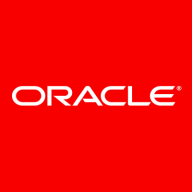

Find out what your peers are saying about Microsoft, Amazon Web Services (AWS), Akamai and others in Infrastructure as a Service Clouds (IaaS).
The value for money is good, and Microsoft Azure has positively impacted our operational costs.
When we use Microsoft Azure, it provides enhanced security from our perspective, though I am not certain about the financial return on investment or benefits for our users as I do not have that information.
Microsoft needs to engage L3 and L2 in support when specified in service tickets.
The support from Microsoft Azure is good.
Regarding technical support from Microsoft, I find they are responsive and helpful, depending on which support package you're on.
When contacting My Oracle Support, I encounter first-line support initially, which is inadequate as I require more in-depth support.
I would rate Oracle Enterprise Manager's technical support at an eight.
Microsoft Azure is not just one product; it is a platform with multiple products within Microsoft Azure, and I would say it is scalable and would rate it a nine.
The scalability of Microsoft Azure is excellent for growth and adaptation, depending on company requirements.
It has different kinds of designs that allow for management and deployment in multi-zones, offering both scalable and non-scalable options.
When trying to connect with non-Oracle products and applications, the connection process is not very straightforward.
We noticed a few critical servers went down due to a Microsoft Azure-end hardware issue.
We are now migrating clients without the zoning into mandatory multi-zone deployments, so if one zone goes down, their application and database remain live.
Microsoft Azure is quite stable, but recent outages and security issues have slightly decreased my confidence.
We have not faced any challenges or difficulties with it.
Recent outages and security issues are also a concern, causing a decrease in confidence, especially when partnering with third-party companies.
The administrative side is suitable for technical people, but our finance and HR super users find it less user-friendly, as they prefer drag-and-drop features to build their own solutions without contacting IT.
There is still room for improvement in terms of pricing.
Adding AI features for automated replies or helpdesk support would improve Oracle Enterprise Manager.
Setting up the Oracle Enterprise Manager is challenging as it requires setting up a separate server.
The areas where Oracle Enterprise Manager could improve include the dashboarding, which could be made more intuitive.
Microsoft solutions might be cheaper than some services like AWS, but some solutions may be more expensive depending on the services compared.
Copilot is expensive based on recent pricing for our POC.
They have discounts and also provide promotions for a three-year reservation which comes with significant discounts on the infrastructure part.
I would rate the pricing of Oracle Enterprise Manager as very expensive, definitely deserving a 10 out of 10.
In terms of pricing, Oracle Enterprise Manager is on the premium side compared to other monitoring tools.
The licensing is based on the core.
Power BI, another feature of Azure, is extremely elegant and has robust features that support forecasting using R and Python.
If Microsoft gives a report, such as a server performance report in a detailed way, which shows what is consuming more CPU, memory, and disk IO, and network utilization during a particular time, it would be helpful to visualize that information.
What is very interesting in terms of scalability is the automatic possibilities to provision some new machines to be able to absorb the number of users we have in the system.
The tool allows us to monitor 24/7, configure dashboards, and quickly check the status of databases that are in critical states.
It also has features like the AWR report, which helps analyze resource usage during specific times.
One of the most valuable features of Oracle Enterprise Manager has been the preventive reporting capability.
| Product | Market Share (%) |
|---|---|
| Microsoft Azure | 13.5% |
| Amazon AWS | 16.9% |
| Alibaba Cloud | 11.0% |
| Other | 58.6% |
| Product | Market Share (%) |
|---|---|
| Oracle Enterprise Manager | 3.5% |
| SolarWinds Database Performance Analyzer | 5.7% |
| Redgate SQL Toolbelt Essentials | 5.6% |
| Other | 85.2% |


| Company Size | Count |
|---|---|
| Small Business | 140 |
| Midsize Enterprise | 53 |
| Large Enterprise | 148 |
| Company Size | Count |
|---|---|
| Small Business | 37 |
| Midsize Enterprise | 24 |
| Large Enterprise | 81 |
Microsoft Azure integrates services and offers flexibility, ensuring compatibility with diverse environments. Its scalability, security, and cost-efficient features enhance deployment and management, making it ideal for infrastructure services and application hosting.
Azure provides a comprehensive suite of tools for application deployment, virtual machine management, and data analytics. It allows seamless integration with Power BI and offers a user-friendly interface supported by detailed documentation and technical support. Though users appreciate its capabilities, they sometimes face challenges with costs, setup, and interface complexity, alongside integration and performance issues. Frequent updates and a learning curve are also noted, though Azure's cloud-based security and scalability remain critical for disaster recovery and business continuity.
What are Azure's key features?Microsoft Azure is widely implemented in industries like financial services, healthcare, and logistics for hosting enterprise applications and vital services. Companies utilize its capabilities for IoT applications, DevOps, and Kubernetes clusters, benefiting from its cloud migrations, data analytics, and active directory support.
Oracle Enterprise Manager is an on-premises management platform that provides a comprehensive integrated solution for managing and automating your various Oracle products, including applications, databases, middleware, hardware, and engineered systems located either in your Oracle data center or in the cloud.
With the Oracle Enterprise Manager's console, you can administer multiple databases and servers, distribute software to multiple servers and clients, monitor objects and events throughout the network, and integrate with other tools.
Key Oracle Enterprise Manager Features and Products
Reviews from Real Users
Oracle Enterprise Manager stands out among its competitors for a number of reasons. Several major ones are its central management and monitoring and its reporting capabilities
Robin C., head of Oracle Exadata Centre of Excellence at Tata Consultancy Services, writes, "The database performance monitoring features are very useful and allow us to quickly zero in on DB-related issues. Exadata storage server and Infiniband switches can be viewed from the GUI in OEM which cannot be done in other tools. The ability to deploy metric extensions makes this tool extensible for our custom monitoring also."
PeerSpot users note the effectiveness of these features. A database manager at a tech services company notes, “The solution's most valuable aspect is the fact that it is embedded with the Oracle database and Oracle's engineering system, its extra data, and analytics. They have plug-ins that are very helpful. Due to the infrastructure's size, the introduction they offer is very, very useful. It helps with an overall understanding of the product. They have a very nice graphical user interface. The monitoring is good. We can capture the SQL tune from us. With Oracle Enterprise Managers, we can see the rich performance tuning.”
We monitor all Infrastructure as a Service Clouds (IaaS) reviews to prevent fraudulent reviews and keep review quality high. We do not post reviews by company employees or direct competitors. We validate each review for authenticity via cross-reference with LinkedIn, and personal follow-up with the reviewer when necessary.